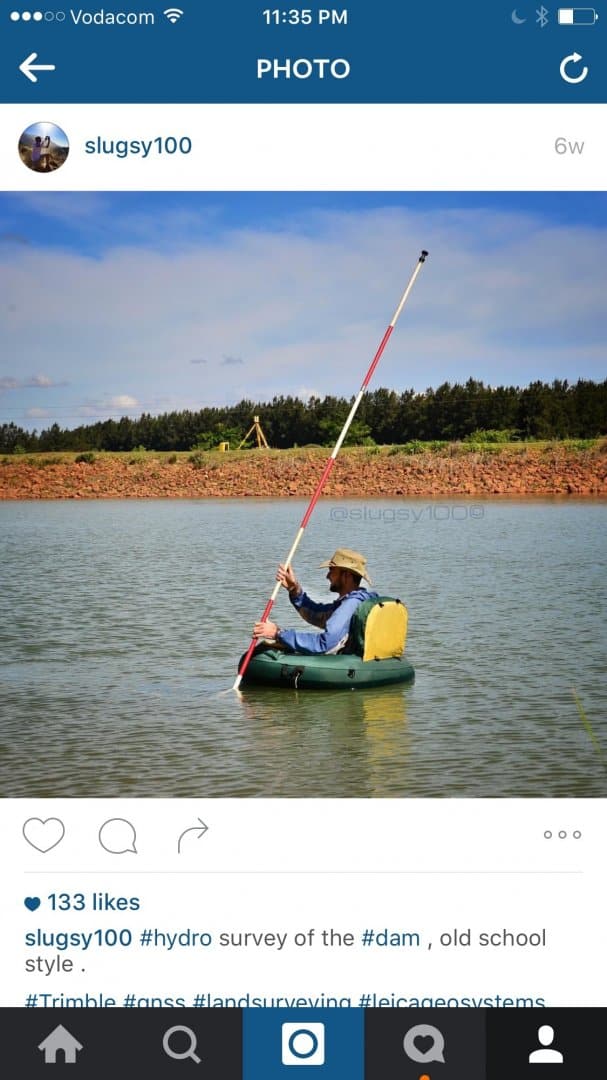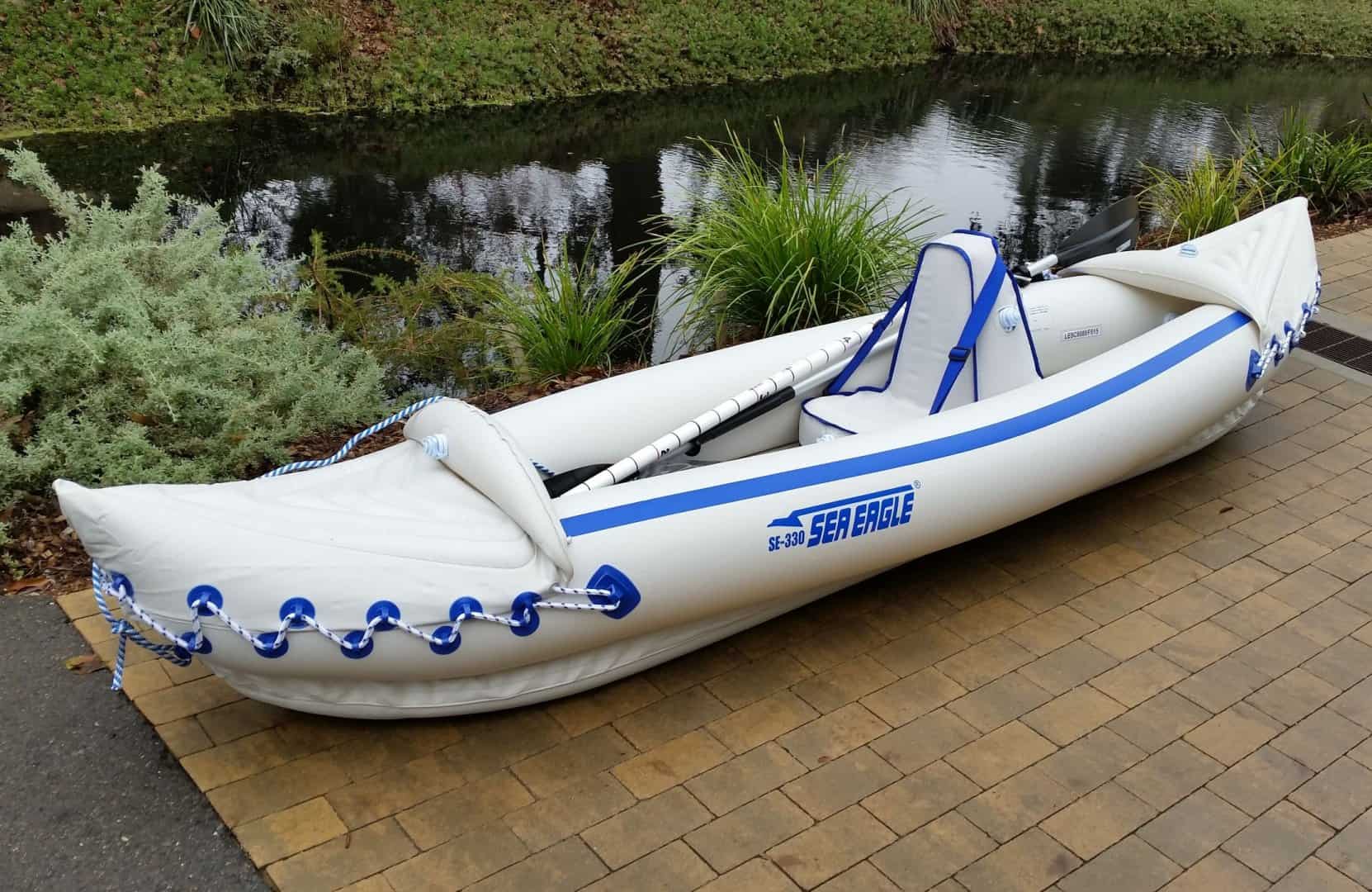I'm a big fan of canoes. I have four including a 19' Grunman freighter with a 15hp motor that makes the thing a rocket and will run in 8" of water (without a moose in the boat). Highly maneuverable and with the stabilizers I'm not worried about flipping it when out riding with my three hounds when they all decide to jump up on one side. I'd think a 16' footer with stabilizers and maybe a trolling motor would allow you to just kick back and take shots just about anywhere you like in water that shallow. With the stabilizers you can stand up and walk around the boat without flipping it.
http://store.springcreek.com/Spring-Creek-HD-Canoe-Stabilizers-w-UR-Complete-Package-p1580.html
Use whatever you can. Does one of your crew have a boat you can pay a day rate on?
We did a few small hydro surveys with a drift boat. Rower hit store on the gps data collector, passenger did the water depths, (knotted cord and lead weight) and made the notes. It worked quite well.
I have used a one man Float tube before. (See link below) Depending on your climate chest waders will keep you dry. I was able to easily topo a creek bed outflow channel as it met a river. Tied a safety line of rope (nylon) to a tree on the bank and had a small paddler that I could rest on the raft when not using, and a two section 12' prism pole. It was a little tough keeping plum but manageable . Additionally any flippers you could get to fit over a boot of a set of waders could eliminate the paddle and free a hand.
What you need is a good Cajun pirogue. They're flat bottomed, very stable, and can operate in very shallow water.
You may also want to consider a HydroLite from Sea Floor Systems - it integrates seamlessly with Trimble Access and is a great way to knock out any kind of hydrographic work in a waterway or water body where a full-blown hydrographic boat doesn't make sense.
Remote Controlled Hydro Survey Boat
This thing looks exactly like what you need. The heck with all of these other ideas that involve potentially getting wet.
This looks like fun and I'm sure it only costs a couple bucks.
[MEDIA=youtube]RafzTVj2DnY[/MEDIA]
imaudigger, post: 345200, member: 7286 wrote: This looks like fun and I'm sure it only costs a couple bucks.
Heck, I bet they give 'em away every third Tuesday...
Why don't you rent one and test it out on this project...come back and give us your impression?
They certainly look like they would be perfect for larger projects.
The one on the second video has the ability to follow pre-determined tracks with a 1 mile range!
imaudigger, post: 345209, member: 7286 wrote: Why don't you rent one and test it out on this project.
For one thing, GPS won't be of much us on this job -- the banks are about 12 feet high and lined with trees and brush. Prism tracking is going to be hard enough with a human operator at the glass; trying to maintain lock with a remote-controlled boat would likely be a frustrating experience.
From that description you are probably gonna have to do it old school by getting a reading on the daily water level and use a cloth tape or lazer site for stations and offset distances from one bank that you can locate your stations on and measure your depth readings on offsets from and keep some hand written notes.
Get you duck waddle tuned up for this one........;-)
I've had pretty good luck from a kayak. I use either a 10' or a 14' length of wood bannister with the prism screwed to the top.
This is sturdy enough to hold myself still with some current or wind while the shot is taken. I can use the "rod" to push myself along, and it works surprisingly well as a paddle. Salt water tolerant, too.
Fixed height, and not too pricy.
I've got a "shoe" to attach for soft bottoms, but that adds a level of difficulty.
Are you doing this with your robot?
Bob Freeman, post: 345886, member: 460 wrote: Are you doing this with your robot?
Yes, robotic. The inexpensive-rod-cum-paddle sounds like a good idea. I'm leaning toward a kayak.
Here's what I decided to use:
It's portable -- everything needed to assemble and operate it breaks down or folds up small enough to fit into a sturdy nylon bag about 4'x2'x1' with a total weight of 30 pounds. The bag is bulky, but I can still get it into my handcart along with everything else I need to operate. The boat seems quite sturdy, and it was only about $240.
I only had a couple of hours to try it out today, so I don't yet have a feel for production rate, but I do know that I wouldn't want to try it solo with any wind -- it'd be too hard to maintain station. It was tough enough today with no wind (and no current -- this waterway is more of a long pond than a flowing creek).
The graduated pole sitting in the kayak is a 5'-ish piece of 1" PVC with caps glued on both ends, one of which has a 5/8-11 bolt through it. A Leica quick-release stud is threaded onto the bolt, and a full-size Leica 360å¡ prism sits on the stud. I used thin strips of electrical tape to mark off every 0.2' along the pipe so I can gauge the depth of the soft muck, something the design engineers requested. The pipe is sturdy enough to use as a push-pole, which helps to move along each cross-section. So far the water hasn't been more than 3' deep, with muck ranging from 0' along the sides to about 1.5' in the center. I'm glad I didn't try to wade it!
The kayak is kind of like a heavy-duty air mattress with a fat tube on each side, but the tubes sit on top of the mattress rather than flush with it. That makes it a little tippy when getting in and out, something I'm not thrilled about but will have to live with. So far no dunkings. I stuck my data collector into a transparent dry bag just in case. It's a little awkward to operate that way, but not bad when taking repetitive shots, and it might save me a big repair or replacement bill in case I manage to dump the boat.
That looks like the boats made from bundles of reeds down in South America I remember reading about them when I read Kon Tiki a long time ago.
I think you have a good, well thought out (as usual) solution. If the wind cooperates. If the wind comes along, you would have a tough time in any boat.
Good luck.
Ken
Add a small line to your homemade range pole and tie it off to the kayak. Dropping a full size Leica 360 prism ($$$) into 1.5' of nasty muck under 3' of water isn't a risk I'd take. Leash anything you don't want to lose. Granted, you could get it back but why not prevent the problem.
My number one fear would be capsizing into that 1.5 feet of muck sideways and having trouble getting my external breathing orifices above the waterline.
Jim Frame, post: 348314, member: 10 wrote: Here's what I decided to use:
.....
The kayak is kind of like a heavy-duty air mattress with a fat tube on each side, but the tubes sit on top of the mattress rather than flush with it. ....[/QUOTENice looking and functional. Like the seat built into it.
Wonder if you could attach a little trolling motor somewhere. That would help maintain x-sectioning placement. Would be an interesting modification - assuming you would use it again. Though I don't recall ever seeing a trolling motor on a kayak. Probably for a very good reason.
Is that the job behind the picture?
Jim Frame, post: 348314, member: 10 wrote: Here's what I decided to use:
The kayak is kind of like a heavy-duty air mattress with a fat tube on each side, but the tubes sit on top of the mattress rather than flush with it. .... .
Good looking and functional. Like the built-in seat.
Wonder if a trolling motor can be attached somehow. Would be an interesting modification - assuming you would use it again. Though I don't recall ever seeing a kayak having a trolling motor on it.
Is that the job in the background?
We have used a kayak with a trolling motor. We put a 2X4 across the kayak, and use straps to hold it tight. On one side we have a rod with GPS at the top and the fathometer at the bottom. The other side of the kayak has the trolling motor attached to the 2X4. You have to keep the motor/propeller turned to keep it going straight since it is offset. Sort of like a twin engine plane running with only one engine. Wants to turn.





